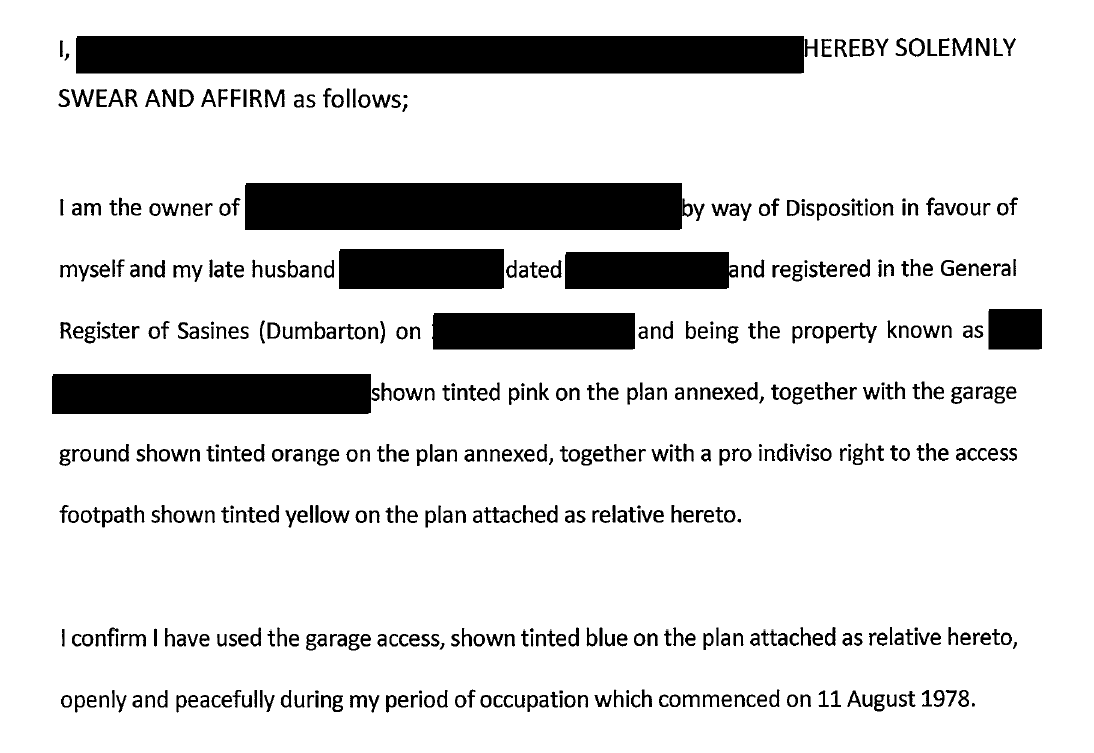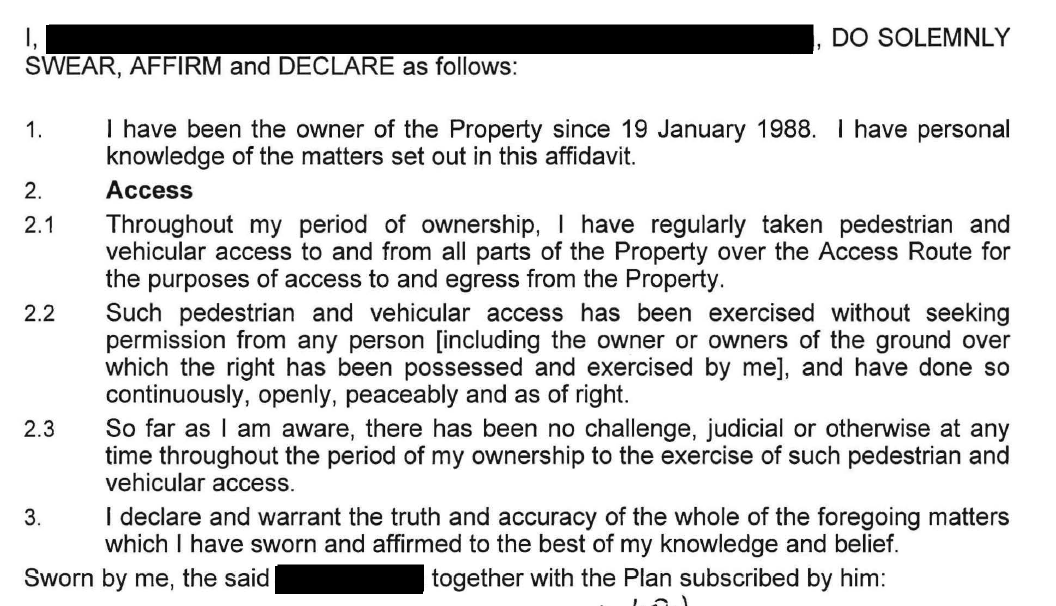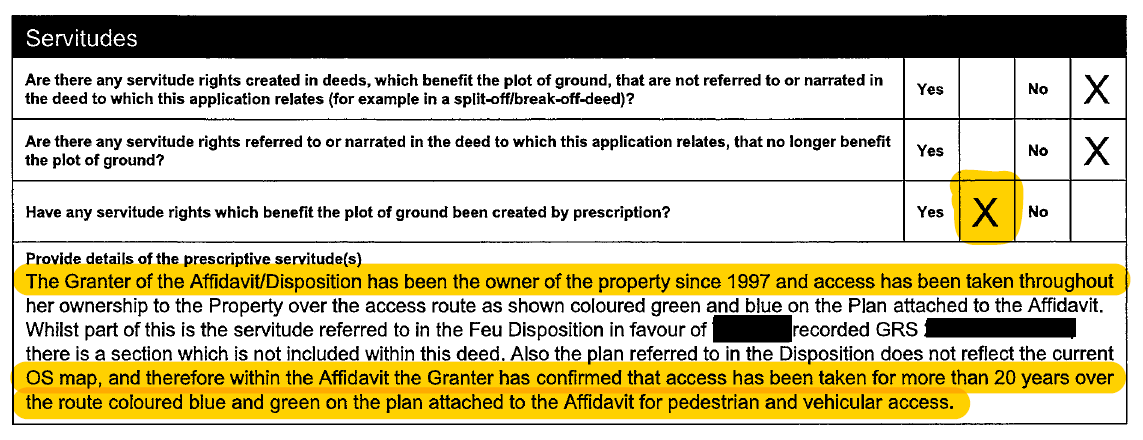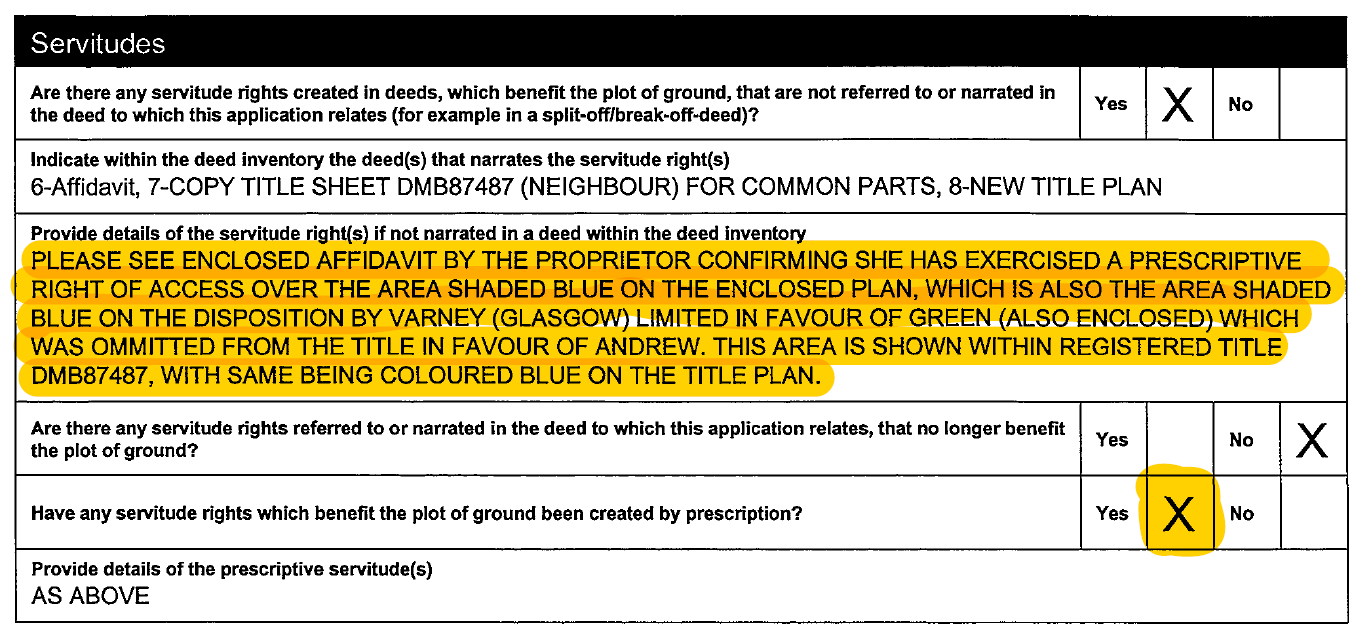A servitude is the right to use an area of land which you don’t own. For example:
- The owner of a mid-terrace house might have a servitude which allows them to walk through their neighbours’ back gardens to put out their wheelie bins
- The owner of a farm cottage might have a servitude allowing them to drive over private farm roads to access their property
Servitudes can be created by several different methods. One method is to simply act as though the servitude right already exists. If a property owner continues to act in this manner for 20 years without any legal challenge, the servitude right “prescribes” – i.e. it can no longer be challenged by the neighbouring landowner. A prescriptive servitude now exists, and it can be entered into the property owner’s title sheet.
How will I recognise the prescriptive servitude characteristic?
- The servitudes question of the application form will state that a prescriptive servitude applies.
- The application will sometimes include at least one affidavit among the supporting documents. There is no set style for affidavits, however generally an affidavit will:
- Be by a single person.
- It will start by narrating that they have knowledge of a specific location. The person may have owned the property, or lived or there, or they may be an employee of the organisation which owned the property at that location.
- It will go on to state that they have used a servitude or access in connection with that property.
- It will be sworn in front of a Notary Public. The Notary Public will also sign the deed.
- There will be a plan showing the route of the servitude.
- The further information section of the application form will refer to the prescriptive servitude in some way. It may use the word “access” instead of “prescriptive servitude”.
What else do I need to know?
- Occasionally you might find an application which is supported by a statutory declaration instead of an affidavit. A statutory declaration isn’t signed by a Notary Public. This should still be given the same prescriptive servitude characteristic.
- The affidavit or statutory declaration is not compulsory and is sometimes omitted.
- The prescriptive servitude does not need to be mentioned in the disposition.
- Some applications will include affidavits relating to other matters such as matrimonial homes, so if there is an affidavit in the application, it’s important to read it.




